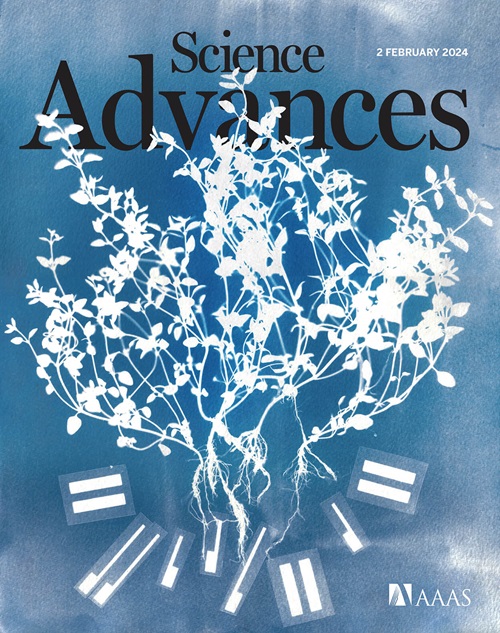Mechanism of high-temperature superconductivity in compressed H2-molecular–type hydride
IF 11.7
1区 综合性期刊
Q1 MULTIDISCIPLINARY SCIENCES
引用次数: 0
Abstract
The discovery of compressed atomic-type hydrides offers a promising avenue toward achieving room-temperature superconductivity, but it necessitates extremely high pressures to completely dissociate hydrogen molecules to release free electrons. Here, we report a remarkable finding of compressed H2-molecular–type hydride CaH14 exhibiting an unusual transition temperature (Tc) of 204.0 kelvin. The peculiarity of its electronic structure lies in the pronounced emergence of near-free electrons, which manifest metallic bonding, but molecular hydrogen fragments persist. This finding indicates that the necessary condition for superconducting transition is forming the Fermi sea with Cooper pairs rather than the monatomic hydrogen. Notably, the formation mechanism of free electrons can be effectively explained by the finite-depth potential wells model. Intriguingly, this H2-molecular–type hydride can downgrade the required pressure to 80 gigapascal while maintaining a high Tc of 84 kelvin, well above the liquid-nitrogen temperature. Our study has established a high-temperature superconducting paradigm and opened the prospect for achieving high-Tc superconductors in H2-molecular–type hydrides at low pressure.

求助全文
约1分钟内获得全文
求助全文
来源期刊

Science Advances
综合性期刊-综合性期刊
CiteScore
21.40
自引率
1.50%
发文量
1937
审稿时长
29 weeks
期刊介绍:
Science Advances, an open-access journal by AAAS, publishes impactful research in diverse scientific areas. It aims for fair, fast, and expert peer review, providing freely accessible research to readers. Led by distinguished scientists, the journal supports AAAS's mission by extending Science magazine's capacity to identify and promote significant advances. Evolving digital publishing technologies play a crucial role in advancing AAAS's global mission for science communication and benefitting humankind.
 求助内容:
求助内容: 应助结果提醒方式:
应助结果提醒方式:


